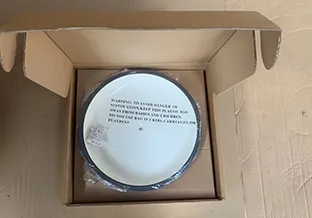
dutch pot material
Understanding Dutch Pot Materials A Guide for Home Cooks
When it comes to cooking, the tools and materials we use can significantly influence the outcome of our culinary endeavors. Among these, the Dutch pot—also known as a Dutch oven—is a kitchen essential that has been cherished for generations. However, not all Dutch pots are created equal, especially when it comes to the materials they are made from. This article explores the various materials used in Dutch pots, detailing their benefits, drawbacks, and best uses.
1. Cast Iron
Cast iron is perhaps the most traditional material used for Dutch pots. Renowned for its excellent heat retention and distribution, cast iron Dutch ovens are capable of maintaining an even cooking temperature. This characteristic makes them ideal for slow-cooking stews, braising meats, and baking bread.
Pros - Exceptional heat retention and distribution. - Durable and long-lasting, often lasting generations if cared for properly. - Natural non-stick surface when seasoned correctly.
Cons - Heavy, making it difficult for some users to handle. - Requires maintenance, such as seasoning to prevent rust and stickiness. - Can be expensive, particularly for high-quality brands.
2. Enameled Cast Iron
Enameled cast iron Dutch ovens bring all the benefits of traditional cast iron while adding a layer of versatility. The enamel coating prevents rusting and eliminates the need for seasoning, making them easier to clean. Moreover, they come in various colors and designs, adding aesthetic value to the kitchen.
Pros - No need for seasoning, low maintenance. - Available in various colors and styles. - Non-reactive surfaces, making them ideal for cooking acidic dishes like tomato sauce.
Cons - Can chip if mishandled, compromising the integrity of the pot over time. - Generally pricier than bare cast iron options. 3. Aluminum
Aluminum Dutch pots are a lighter alternative to their cast iron counterparts. They heat up quickly and provide even cooking, which can be beneficial for boiling and frying. Some aluminum Dutch ovens are coated with a non-stick surface, making them easy to clean.
dutch pot material

Pros - Lightweight and easy to handle. - Heats up quickly, reducing cooking time. - Generally more affordable than cast iron options.
Cons - Less durable than cast iron and can warp under high heat. - Non-stick coatings can wear out over time, reducing effectiveness. - Not suitable for high-heat cooking or use in the oven unless specifically designed for it.
Stainless steel Dutch ovens are another option on the market. Known for their durability and resistance to staining and rust, these pots can heat evenly but may not retain heat as well as cast iron. Many stainless steel models come with a thick base that helps conduct heat more evenly.
Pros - Durable and resistant to corrosion. - No reactivity with food, making them versatile. - Easy to clean, often dishwasher safe.
Cons - May not conduct heat as evenly as cast iron. - Heat retention is not as effective, which can result in overcooking or temperature fluctuations. 5. Ceramic
Ceramic Dutch ovens are increasingly popular due to their aesthetic appeal and non-reactive qualities. They can be used for baking, roasting, and stovetop cooking, and they often come in a variety of vibrant colors.
Pros - Non-reactive, making them great for acidic foods. - Attractive designs that can be presented at the table. - Generally easy to clean.
Cons - Can be fragile and prone to chipping or cracking. - Limited heat resistance, often not suitable for stovetop use.
Conclusion
When selecting a Dutch pot, considering the material is paramount as it can greatly influence your cooking experience. Cast iron and enameled cast iron are ideal for those who appreciate tradition and durability, whereas aluminum and stainless steel offer lighter, more affordable alternatives. Ceramic pots can add a touch of elegance to your kitchen but come with certain limitations. Ultimately, the best choice will depend on your cooking style, preferences, and the dishes you enjoy preparing. Investing in a quality Dutch pot tailored to your needs can enhance your culinary creations and bring joy to your cooking experience. So whether you’re simmering a stew or baking a casserole, understanding the materials will help you make an informed decision for your kitchen.
-
Season Cast Iron Perfectly with GPT-4 Turbo TipsNewsAug.01,2025
-
High Quality Cast Iron Cookware - Baixiang County Zhongda MachineryNewsAug.01,2025
-
Premium Cast Iron Pan: Durable & Perfect HeatNewsAug.01,2025
-
High Quality Kitchen Durable Black Round Cast Iron Cookware Pancake Crepe Pan-Baixiang County Zhongda Machinery Manufacturing Co., Ltd.NewsAug.01,2025
-
Cast Iron Cookware - Baixiang County Zhongda Machinery | Nonstick, Heat ResistanceNewsAug.01,2025
-
High Quality Kitchen Durable Black Round Cast Iron Cookware - Baixiang County Zhongda Machinery | Non-Stick, Heat Retention, DurableNewsJul.31,2025


